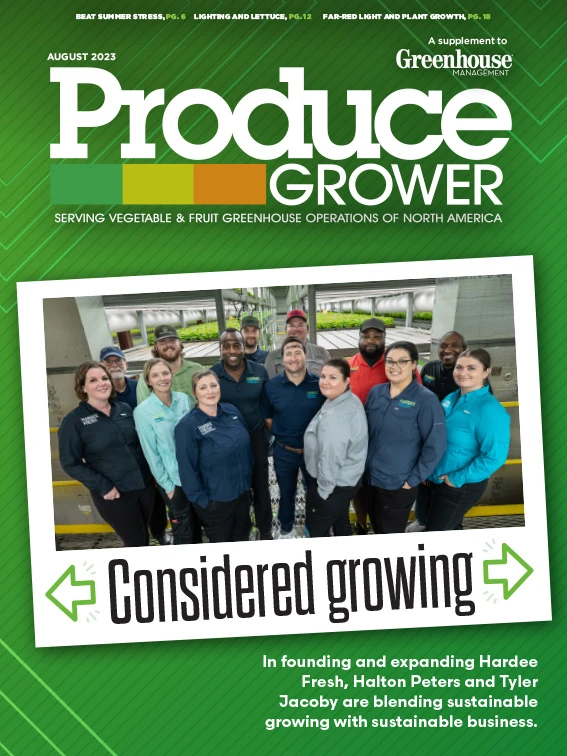

Produce Grower: In 2022, AppHarvest opened a facility dedicated to strawberries and cucumbers. Why were strawberries something worth dedicating sizable greenhouse space to?
Tony Martin: Following the opening of our 60-acre flagship indoor farm in Morehead, Kentucky, in 2021, that is dedicated to tomatoes, we prioritized diversifying our crop set with the three new farms we opened in 2022. With ample precipitation and a moderate climate, conditions are great in Eastern Kentucky for strawberry production in the fall, winter and spring, and we alternate with cucumber production in the heat of summer. We can grow about 1 million strawberry plants per season. California’s primary strawberry season runs from April through November, so AppHarvest has the opportunity to deliver additional volume at a time when open-field supply starts to wane.
Strawberry demand has continued to rise in the U.S., and the U.S. has continued to increase imports to meet that demand, so we saw an opportunity to increase domestic production. In 2022 (January through December), total imports of fresh and processed strawberry products totaled $1.5 billion — up 2% from a year earlier.
AppHarvest has the geographic location benefit of being within a day’s drive of nearly 70% of the U.S. population, which is significant with a highly perishable fruit like strawberries.
Strawberries also are perennially on the “dirty dozen” list of fruits/vegetables with the most pesticides, so we also saw an opportunity with our focus on integrated pest management to provide a cleaner supply of strawberries.
PG: Where is the retail market for greenhouse-grown strawberries going in the next year? What about the next five years?
TM: We continue to see demand for controlled environment agriculture produce increase because of its more reliable quality and quantity. A recent report from RaboResearch found that despite being a mature market, U.S. strawberry consumption continues to grow, both in terms of household penetration and volume, and driving an increase in imports as well as planted crops in California — which translates into the opportunity for more CEA production as well.
Also, there is increasing demand for premium strawberries, and many of those varieties perform better in a CEA environment than in open-field.

PG: What are the keys to successful greenhouse strawberry production?
TM: Aggressive integrated pest management strategy and execution. Highly disciplined environmental controls specific to the variety grown — especially temperature, lighting and CO2. Varietal selection — as some are continuous and others produce in waves so alignment with market demand and production is critical.
PG: How do strawberries fit into AppHarvest’s overall business plan?
TM: Aggressive integrated pest management strategy and execution. Highly disciplined environmental controls specific to the variety grown — especially temperature, lighting and CO2. Varietal selection — as some are continuous and others produce in waves so alignment with market demand and production is critical.
PG: Is there potential for other kinds of berries to be grown in a greenhouse setting?
TM: For hydroponically grown berries, strawberries are the frontrunner based on the quality, yield and efficiency of harvesting and processing. I expect to see further developments and progress with raspberries, blackberries and blueberries as well.
Get curated news on YOUR industry.
Enter your email to receive our newsletters.
Explore the August 2023 Issue
Check out more from this issue and find your next story to read.
Latest from Produce Grower
- University of Evansville launches 'We Grow Aces!' to tackle food insecurity with anu, eko Solutions
- LettUs Grow, KG Systems partner on Advanced Aeroponics technology
- Find out what's in FMI's Power of Produce 2025 report
- The Growth Industry Episode 3: Across the Pond with Neville Stein
- The Growth Industry Episode 2: Emily Showalter on how Willoway Nurseries transformed its business
- 80 Acres Farms expands to Georgia, Texas and Colorado
- How BrightFarms quadrupled capacity in six months
- Oasis Grower Solutions releases two foam AeroSubstrates for hydroponic growers





